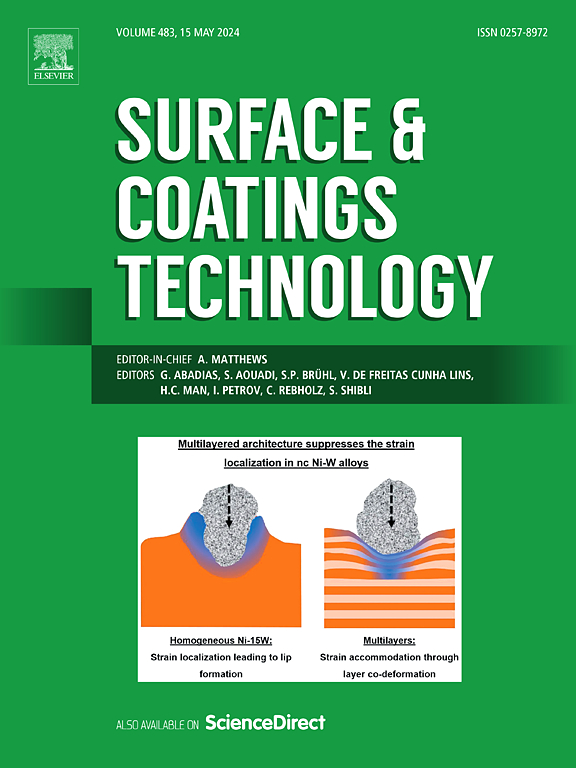Microstructure evolution and water vapor resistance of multi-layer EB-PVD yttrium-based EBCs
IF 5.3
2区 材料科学
Q1 MATERIALS SCIENCE, COATINGS & FILMS
引用次数: 0
Abstract
Electron beam physical vapor deposition (EB-PVD) is a promising deposition technique to produce environmental barrier coatings (EBCs) to protect ceramic matrix composites (CMCs) for complex components in aircraft engines with sharp edges such as vanes or blades. The main focus of this study was establishing an initial parameter set for depositing a multi-layer yttrium mono−/di-silicate (YMS/YDS) EBCs using EB-PVD. YMS and YDS layers show a dense microstructure without feather-arms and opened inter-columnar gaps in the as deposited state. EB-PVD EBCs were found to be amorphous in the as-coated condition, and a crystallization heat treatment was needed. Oxidation tests of EBCs were also carried out under “air condition” (1400 °C, 100 h, 100 wt% air) and “wet condition” (1300 and 1400 °C, 100 h, 30 wt% H2O/70 wt% air) to get the preliminary assessment of the degradation. The YMS top layer has undergone slight morphological changes such as porosity and crack network formation. The YMS layer has exhibited a phase separation into Y2O3 and X2-YMS after the oxidation. No noticeable degradation of YDS due to water vapor oxidation was found. However, few polymorphs were observed in the YDS layer along with few cracks during various stages of the heat treatments.

求助全文
约1分钟内获得全文
求助全文
来源期刊

Surface & Coatings Technology
工程技术-材料科学:膜
CiteScore
10.00
自引率
11.10%
发文量
921
审稿时长
19 days
期刊介绍:
Surface and Coatings Technology is an international archival journal publishing scientific papers on significant developments in surface and interface engineering to modify and improve the surface properties of materials for protection in demanding contact conditions or aggressive environments, or for enhanced functional performance. Contributions range from original scientific articles concerned with fundamental and applied aspects of research or direct applications of metallic, inorganic, organic and composite coatings, to invited reviews of current technology in specific areas. Papers submitted to this journal are expected to be in line with the following aspects in processes, and properties/performance:
A. Processes: Physical and chemical vapour deposition techniques, thermal and plasma spraying, surface modification by directed energy techniques such as ion, electron and laser beams, thermo-chemical treatment, wet chemical and electrochemical processes such as plating, sol-gel coating, anodization, plasma electrolytic oxidation, etc., but excluding painting.
B. Properties/performance: friction performance, wear resistance (e.g., abrasion, erosion, fretting, etc), corrosion and oxidation resistance, thermal protection, diffusion resistance, hydrophilicity/hydrophobicity, and properties relevant to smart materials behaviour and enhanced multifunctional performance for environmental, energy and medical applications, but excluding device aspects.
 求助内容:
求助内容: 应助结果提醒方式:
应助结果提醒方式:


